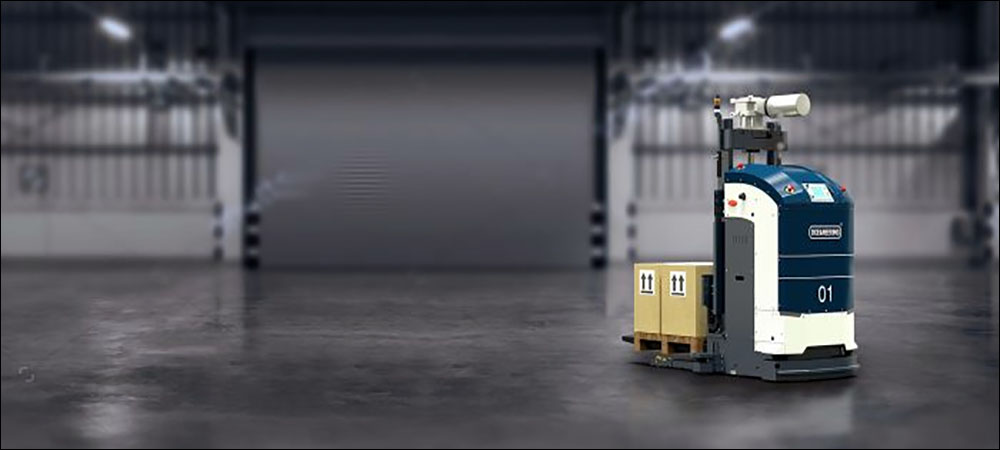Ed. Note: A version of this article originally appeared at IoP Journal.
Entrepreneurship in Brazil isn’t easy, due to a range of difficulties and a lack of government support. But within such an environment, AGVS, which offers a portfolio of self-guided vehicles with 100 percent Brazilian development and construction projects, began to use the radio frequency identification technology of another Brazilian firm, eSolutech, to increase its competitiveness. In an interview with IoP Journal TV, the top executives of both companies, eSolutech’s Samuel Bloch and AGVS’s Thomaz Rocco, set the tone for the initiative.
The idea, they explained, was to make autonomous guided vehicles (AGVs) capable of self-guiding via eSolutech’s RFID system, which uses tags from HID Global and a reader developed by the Brazilian companies. In the future, the objective will include allowing companies to offer an integrated solution capable of taking inventory counts of large warehouses, such as distribution centers, at times when there is little movement or no operations in progress.
ZF Group, in Sorocaba, employs AGVs to transport such products as transmissions, axles and components, for use in manufacturing inside and between its buildings. The project is part of ZF’s strategy to make its processes increasingly aligned with the principles of Industry 4.0 and automation. The implementation, launched in 2019, was led by the company’s logistics division, which adopted the technology with an interface for external areas. Last year, the division’s infrastructure was adapted to receive these vehicles. The first of these commenced operations in January 2021, with the four AGVs operating simultaneously two months later.
Automation and digitalization are part of the strategy to meet forecasts for expanding ZF’s logistics and operations in South America. Such expectations are the main drivers for the creation and implementation of the new project, which has already increased productivity by 31.8 percent and reduced the variability of material delivery times by 94.6 percent, according to the company.
RFID tags installed in the paths of the AGVs determine each vehicle’s speed and location, as well as what it should and should not do. Variables such as external areas, flat floors, maximum speed, curves, walls, and so forth are considered as well. Flexibility is one of the great advantages of AGVs, since it is possible for them to change routes at any given time, according to the needs of each operation.
Autonomous vehicles can reach a speed of 14 kilometers per hour (8.7 miles per hour), though they can be programmed to operate at lower speeds if needed, according to the environment in which they are being utilized. The equipment’s battery is charged at five stopping points, and at no time is it necessary to interrupt operations since the vehicle’s movement capacity is 24 hours a day.


